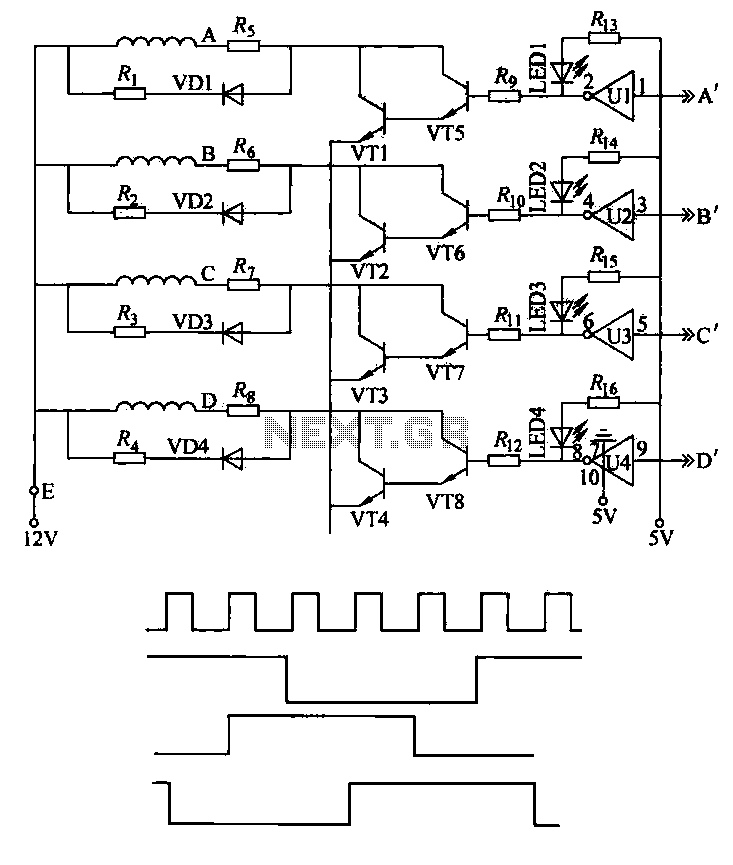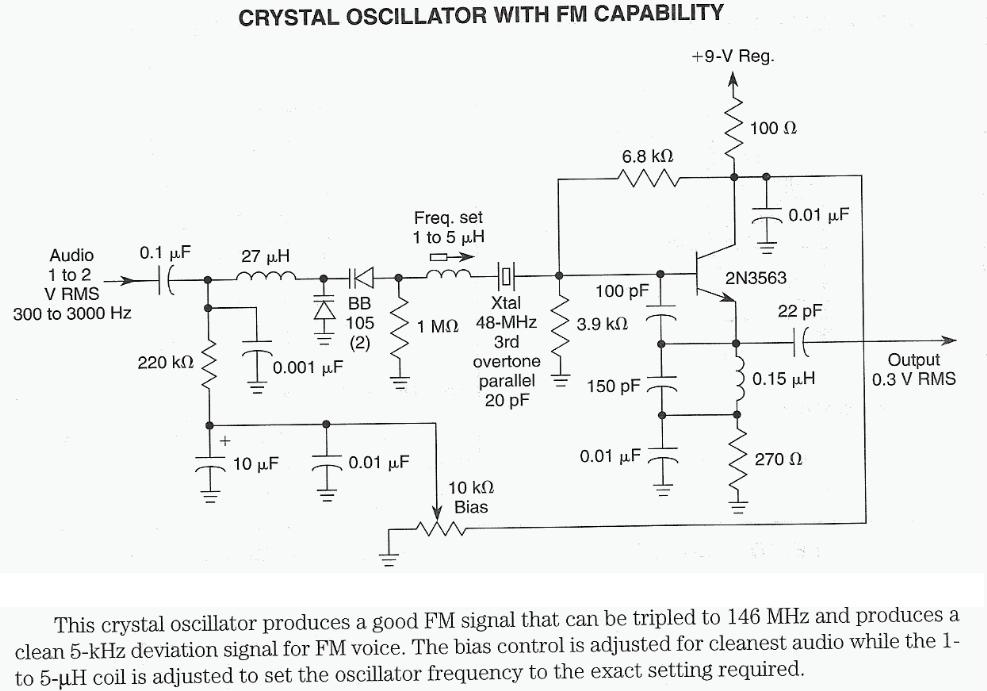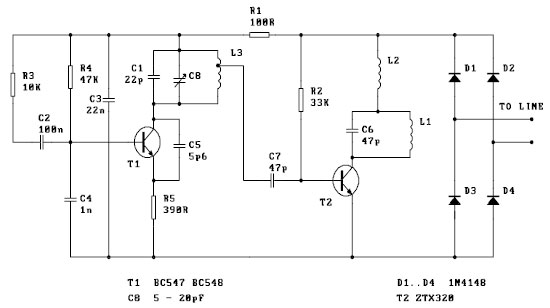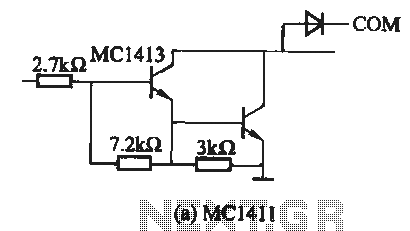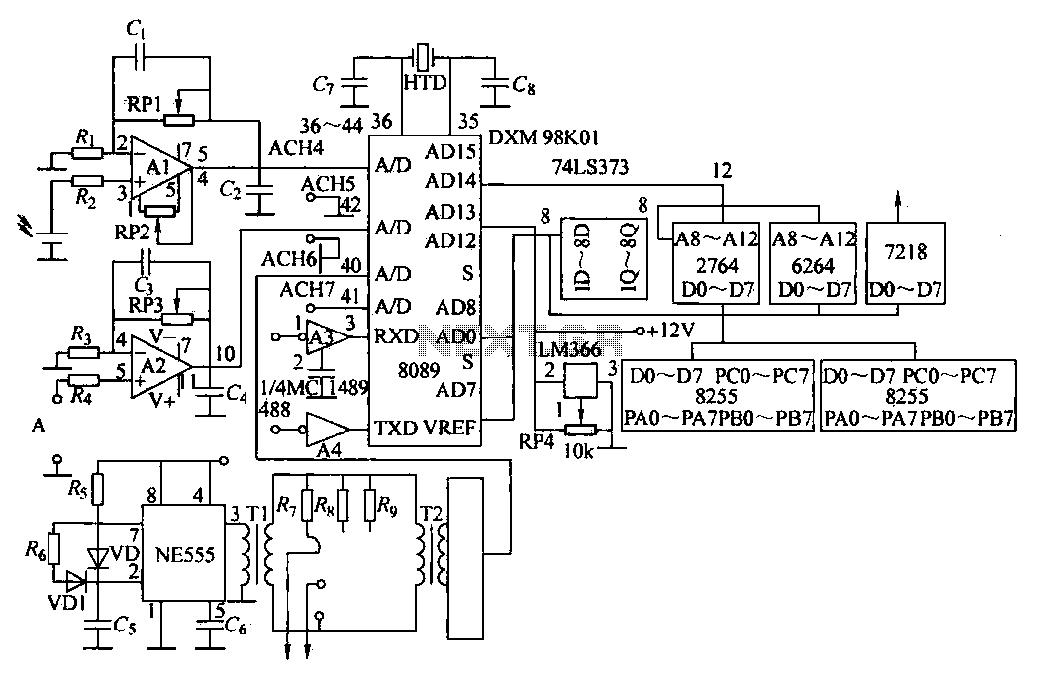
Active FM Antenna Booster circuit PCB
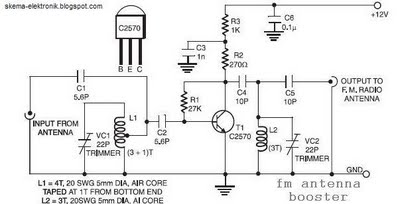
The coil L2 is tapped at the first turn from the ground lead side and is similar to coil L1, but consists of only three turns. The pin configuration of the transistor 2SC2570 is illustrated in the FM antenna booster schematic. Input and output trimmers (VC1 and VC2) should be adjusted for maximum gain.
The described circuit involves an FM antenna booster that utilizes two coils, L1 and L2. Coil L1 serves as the primary inductive element, while coil L2, which has only three turns, is used for coupling and signal enhancement. The tapping of coil L2 at the first turn from the ground lead indicates a design choice aimed at optimizing the inductance and maximizing signal reception.
The transistor 2SC2570 is a crucial component in this circuit, functioning as an amplifier. Its pin configuration must be accurately followed to ensure proper functionality. The transistor operates within its specified parameters to amplify the signals received by the antenna.
Adjustable trimmers, designated as VC1 and VC2, are incorporated into the circuit to allow for fine-tuning of the input and output impedance. Proper adjustment of these trimmers is essential for achieving maximum gain, which enhances the overall performance of the antenna booster. The adjustment process typically involves monitoring the output signal strength while varying the trimmer settings to find the optimal configuration.
The schematic should include clear representations of the coil windings, the transistor connections, and the trimmer locations, ensuring that all components are correctly aligned for effective operation. This design is particularly useful in environments with weak signal reception, providing an improved signal strength for FM radio applications.It is tapped at the first turn from ground lead side. Coil L2 is similar to L1, but has only three turns. Pin configuration of transistor 2SC2570 is shown in the fm antenna booster schematic. Adjust input/output trimmers (VC1/VC2) f or maximum gain. 🔗 External reference
The described circuit involves an FM antenna booster that utilizes two coils, L1 and L2. Coil L1 serves as the primary inductive element, while coil L2, which has only three turns, is used for coupling and signal enhancement. The tapping of coil L2 at the first turn from the ground lead indicates a design choice aimed at optimizing the inductance and maximizing signal reception.
The transistor 2SC2570 is a crucial component in this circuit, functioning as an amplifier. Its pin configuration must be accurately followed to ensure proper functionality. The transistor operates within its specified parameters to amplify the signals received by the antenna.
Adjustable trimmers, designated as VC1 and VC2, are incorporated into the circuit to allow for fine-tuning of the input and output impedance. Proper adjustment of these trimmers is essential for achieving maximum gain, which enhances the overall performance of the antenna booster. The adjustment process typically involves monitoring the output signal strength while varying the trimmer settings to find the optimal configuration.
The schematic should include clear representations of the coil windings, the transistor connections, and the trimmer locations, ensuring that all components are correctly aligned for effective operation. This design is particularly useful in environments with weak signal reception, providing an improved signal strength for FM radio applications.It is tapped at the first turn from ground lead side. Coil L2 is similar to L1, but has only three turns. Pin configuration of transistor 2SC2570 is shown in the fm antenna booster schematic. Adjust input/output trimmers (VC1/VC2) f or maximum gain. 🔗 External reference
